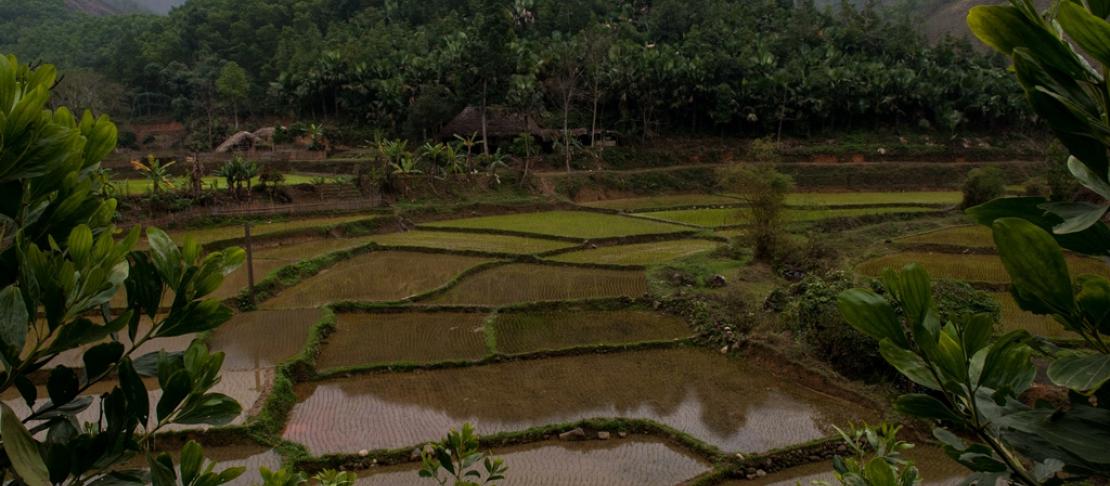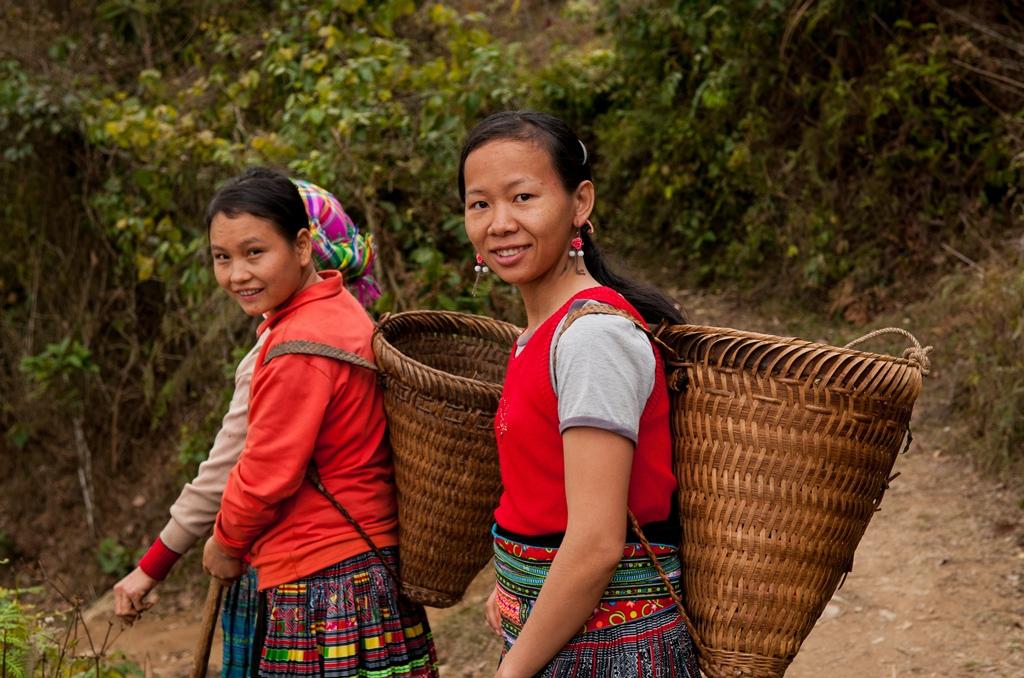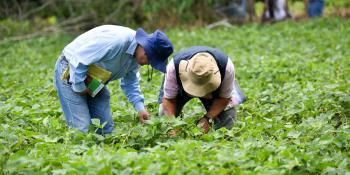Tracing Vietnam’s climate scars

Vietnam’s rugged northern terrain is characterized by sloping hills giving way to lush paddy fields and stretches of ancient tea.
Yet the scars of climate change mark themselves in the landscape – scars which scientists and researchers are now using to piece together climate-smart solutions so communities can adapt to future weather shocks.
Vietnam is among eight countries in Southeast Asia particularly vulnerable to the impacts of climate change, with widespread poverty and highly populated low-lying agricultural areas prone to encroaching salinity and increased weather intensity.
Already firmly rooted in West Africa, East Africa and South Asia, the Climate Change, Agriculture and Food Security Program (CCAFS) is now rolling out a set of research hubs, or climate smart villages, in Southeast Asia.
The village sites – which will allow farming communities and researches to identify together site-specific agricultural practices to adapt to changing climate impacts – are also being established in the focus countries in the region which include Cambodia, Laos, and Vietnam.
The climate-smart villages will link farmers to weather information systems, advice on resilient water management practices and greenhouse gas-cutting techniques, through improved farming practices or fuel-efficient machinery for example.
The first village in northern Vietnam has been chosen by a team of researchers through a consensus selection and criteria based ranking system, taking into account the diversity of the landscape, climate challenges faced by the local communities and existing infrastructure such as road access.
The prospective site is in Yenbai Province, northern Vietnam, where the landscape is affected by variable climate patterns with episodes of cold weather, heavy rains and drought.
This is causing crops and livestock loses and aggravates rapid degradation of natural resources, for example leading to soil erosion in lowland and upland areas as farmers intensify their production systems.
Other climate-smart villages will be chosen in the central and southern parts of the country, with prospective sites already selected in Laos and Cambodia.

Visit to Pang Cang, Suoi Giang northern Vietnam for climate smart site (Photo: G. Smith - CIAT)
Part of a global strategy
This week, CCAFS researchers will meet to decide further details surrounding the establishment of climate-smart villages as part of a wider research and development strategy for the whole Southeast Asia region.
This week we will listen to the views of key stakeholders and national partners in the region about how to shape more effective climate strategies, understand local impacts and identify opportunities to work with partners,” said Leo Sebastian, CCAFS Regional Program Leader for Southeast Asia.
It is critical that the impacts of climate change are understood at the local and national levels – and this is part of that awareness-raising process. This is an opportunity to identify cutting-edge knowledge, information and policy gaps on climate change in the region and map out a full climate strategy for Southeast Asia for the next three years,” he added.
As CCAFS – led by CIAT – strengthens its presence in the region, the program is set to build on local partnerships to foster a better understanding of climate change, its impacts and potential solutions or adaptation measures.
Climate change is projected to contribute to significant variations in rainfall patterns in the region, increased incidence of severe weather events, higher temperatures and sea-level rise in many highly populated areas. These changes will adversely affect agricultural yields, biodiversity, forest harvests and availability of clean water.
With much of the population and infrastructure located in coastal and river deltas, hundreds of millions of people are at great risk from the impacts of climate change. At the same time, the region is a global hot spot for agricultural emissions, particularly from rice cultivation and deforestation.
The new CCAFS strategy will also put in place measures to tackle the issue of agricultural emissions, particularly from rice. Research has already shown how, through interventions such as water management, efficient use of nitrogen and management of organic residues, methane emissions from eligible paddy rice systems can be reduced by around 30% while enhancing food yields, and saving water, fertilizer and energy.
Georgina Smith is a Communications Specialist working for International Center for Tropical Agriculture (CIAT) based in Vietnam. She also helps woth communication for CCAFS in the Southeast Asia region.



